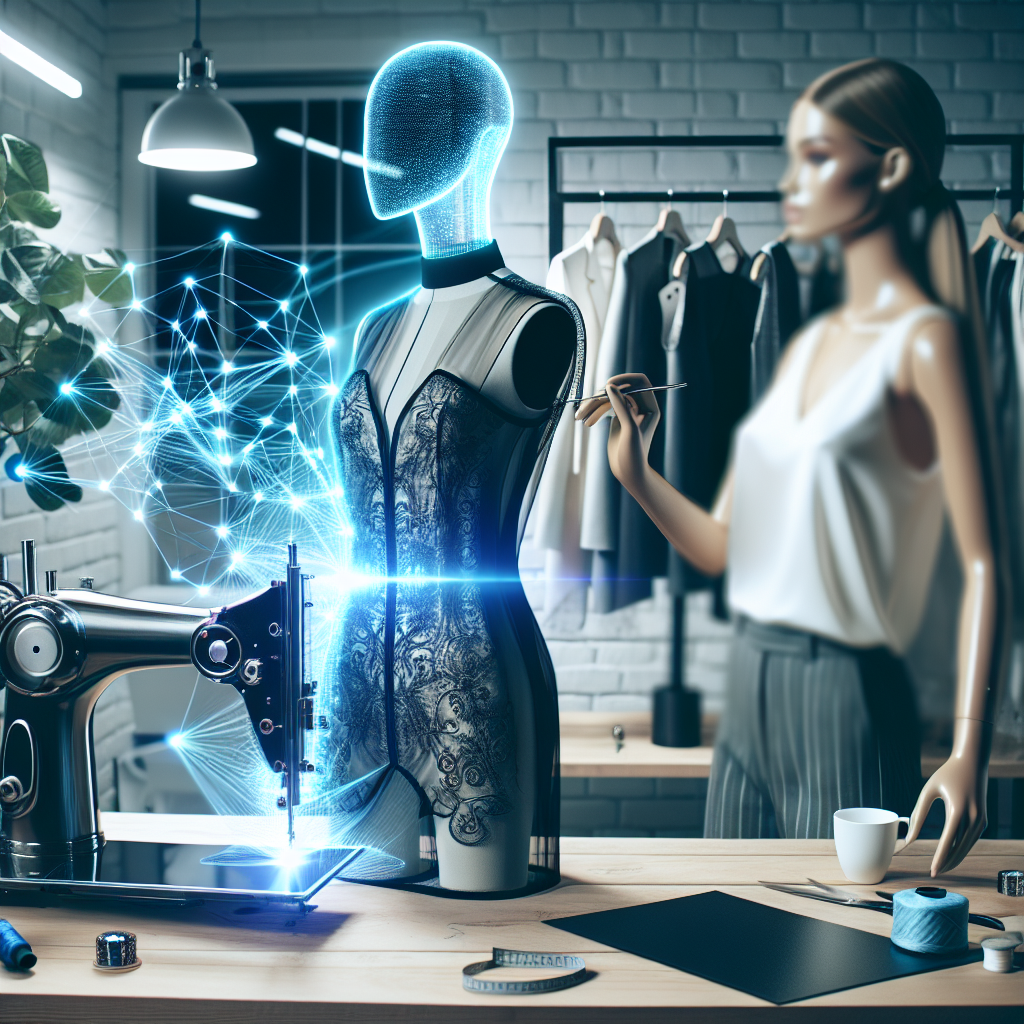Artificial intelligence (AI) is revolutionizing industries across the globe, and the fashion industry is no exception. AI-powered fashion design is the next wave of innovation in the industry, offering designers new tools and capabilities to create cutting-edge designs faster and more efficiently than ever before. From trend forecasting to virtual try-on technology, AI is transforming the way fashion is created, marketed, and consumed.
AI-powered fashion design encompasses a wide range of applications, from designing clothing and accessories to predicting trends and optimizing supply chains. One of the key benefits of AI in fashion design is its ability to analyze vast amounts of data quickly and accurately, helping designers to make better-informed decisions and create more successful products. AI can also help to streamline the design process, reducing time and costs while improving the quality and innovation of the final product.
One of the most exciting applications of AI in fashion design is trend forecasting. AI algorithms can analyze social media, runway shows, and other sources of data to identify emerging trends and predict what styles will be popular in the future. This can help designers to stay ahead of the curve and create designs that resonate with consumers. AI can also be used to personalize designs for individual customers, taking into account their preferences, body type, and style to create custom garments that fit perfectly and reflect their unique taste.
Another key area where AI is making an impact in fashion design is in virtual try-on technology. AI-powered platforms allow customers to try on clothing and accessories virtually, using 3D modeling and artificial intelligence to create a realistic simulation of how the items will look on their body. This can help to reduce returns and improve customer satisfaction, as shoppers can see how garments will fit and look before making a purchase. Virtual try-on technology also opens up new possibilities for customization and personalization, allowing customers to mix and match styles, colors, and fabrics to create their own unique looks.
AI is also being used to optimize supply chains and production processes in the fashion industry. By analyzing data on sales, inventory levels, and consumer preferences, AI algorithms can help designers and manufacturers to better predict demand, reduce waste, and improve efficiency. This can lead to cost savings, faster turnaround times, and a more sustainable approach to fashion production. AI can also help to identify opportunities for innovation and collaboration, enabling designers to work with suppliers, manufacturers, and retailers to create new products and reach new markets.
While AI-powered fashion design offers many benefits, it also raises questions and concerns about the impact of technology on creativity, jobs, and ethical issues. Some designers worry that AI will replace human creativity and intuition, leading to a homogenization of design and a loss of artistic expression. Others are concerned about the potential for job displacement, as AI algorithms take over tasks that were previously performed by designers and other professionals. There are also ethical considerations around data privacy, intellectual property, and the environmental impact of AI-powered fashion design.
To address these concerns, designers and industry stakeholders must work together to ensure that AI is used responsibly and ethically in fashion design. This includes developing guidelines and standards for the use of AI in design, protecting intellectual property rights, and promoting diversity and inclusion in the development and implementation of AI technologies. By embracing AI as a tool for innovation and collaboration, the fashion industry can harness the power of technology to create new opportunities for creativity, sustainability, and growth.
In conclusion, AI-powered fashion design is the next wave of innovation in the industry, offering designers new tools and capabilities to create cutting-edge designs faster and more efficiently than ever before. From trend forecasting to virtual try-on technology, AI is transforming the way fashion is created, marketed, and consumed. By embracing AI as a tool for innovation and collaboration, the fashion industry can harness the power of technology to create new opportunities for creativity, sustainability, and growth.
FAQs:
1. What is AI-powered fashion design?
AI-powered fashion design refers to the use of artificial intelligence algorithms and technologies to enhance the design process in the fashion industry. This includes applications such as trend forecasting, virtual try-on technology, and supply chain optimization.
2. How does AI help in trend forecasting?
AI algorithms can analyze vast amounts of data from sources such as social media, runway shows, and sales data to identify emerging trends and predict what styles will be popular in the future. This can help designers to stay ahead of the curve and create designs that resonate with consumers.
3. What is virtual try-on technology?
Virtual try-on technology uses 3D modeling and artificial intelligence to create a realistic simulation of how clothing and accessories will look on an individual’s body. This allows customers to try on garments virtually before making a purchase, reducing returns and improving customer satisfaction.
4. How can AI optimize supply chains in the fashion industry?
By analyzing data on sales, inventory levels, and consumer preferences, AI algorithms can help designers and manufacturers to better predict demand, reduce waste, and improve efficiency in the supply chain. This can lead to cost savings, faster turnaround times, and a more sustainable approach to fashion production.
5. What are the ethical considerations around AI-powered fashion design?
Ethical considerations around AI-powered fashion design include concerns about data privacy, intellectual property rights, job displacement, and the environmental impact of technology. It is important for designers and industry stakeholders to work together to ensure that AI is used responsibly and ethically in the fashion industry.

